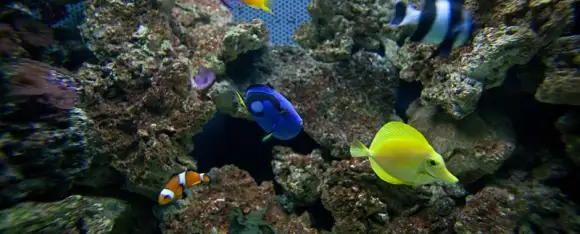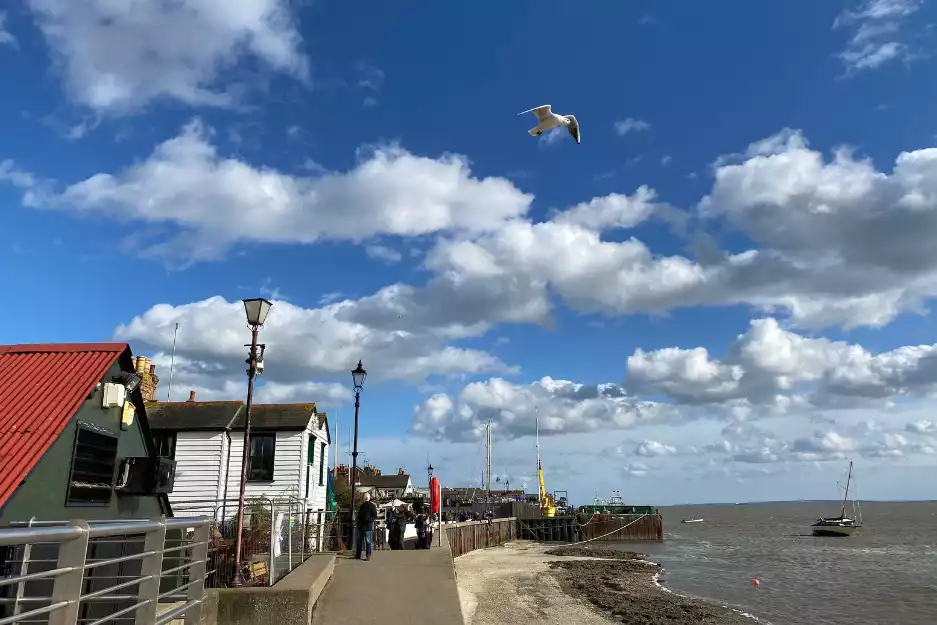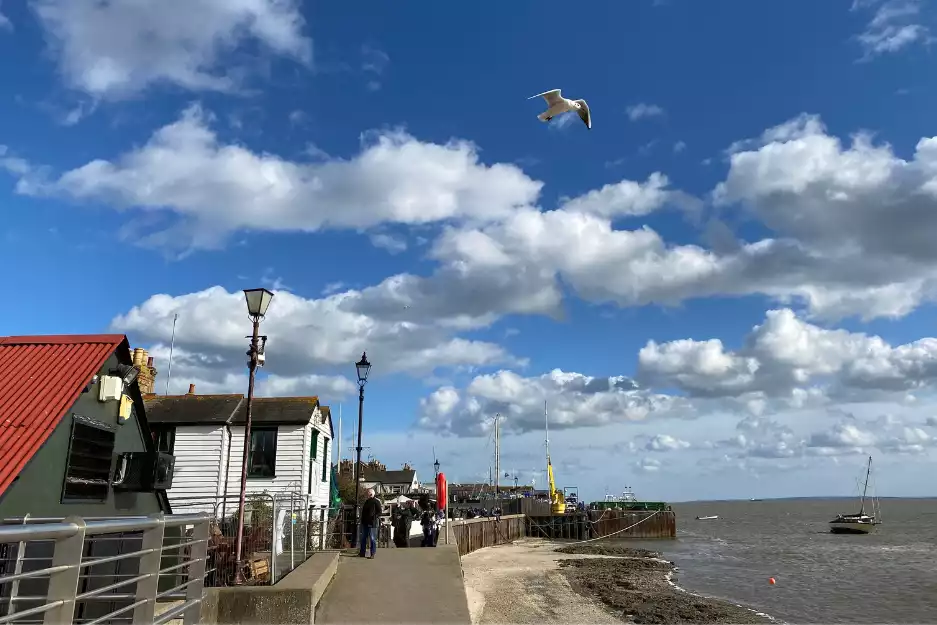-
AllAnytime Fitness Gym Art Beer Of The Week Blog Bus Fares Bus Service Business Business Expo C2C Care Care Home Charity Children Christmas Cinema City Status Cliffs Pavilion Cliffs Pavilion Review Cocktail Recipes College Community Competition Construction Coronation Coronavirus Dannielle Emery Design Easter Education Electoral changes Leigh on sea Emma Smith Employment Emsella Chair Environment Essex & Suffolk Water News Essex Police Essex Wildlife Trust News Events Family Fun Fashion Festival Film Finance Fitness Food Food & Drink Football Foulness Bike Ride Fresh Face Pillow Company Gardening General Election Hair & Beauty Halloween Harp Havens Havens Hospice Havens Hospices Havens Hospices Health & Fitness Health & Beauty Health & Fitness Healthwatch Southend Historicaleigh History Holidays Housing Indian Indirock Jubilee Karen Harvey Conran Kids Kids Blogs Kids Competitions Kids Reviews Lazydays Festival Legal Legal Eagle Leigh Art Trail Leigh Folk Festival Leigh Library Leigh On Sea Finds Leigh Road Leigh Town Council Leigh Town Council Press Release Leigh on Sea Leigh on Sea Sounds Leigh on sea Folk Festival Leigh on sea Marathon Leigh on sea Town Council Leigh on sea man breaks marathon record Leigh on sea news Lifestyle Livewell Southend Press Release LoS Shop London London Southend Airport Los Shop Marathon Melinda Giles Mortgage Angel blog Mortgages Motherofalloutings Mughal Dynasty Music My Mortgage Angel MyLoS NHS News News Newsletter Offers Outfit Of The Week Palace Theatre Parenting Parking Pets Picture Of The Week Pier Politics Press Release Press Release Southend City Council Professional Property Property Of The Week RSPCA Ray Morgan Re:loved Recipes Recycling Restaurant Restaurant Review Restaurants Review Roads Rotary Club Royal Hotel Royal Visit SAVS Schools Seafront Shopping Shows & Music Review Shows & Music Shows & Music Review Southend Southend Airport Southend Borough Council Press Release Southend City Bid News Southend City Council Southend City Council Press Release Southend City Council Press Release Southend Community Safety Southend Hospital News Southend In Sight Southend In Sight Southend In Sight Press Release Southend on Sea Sport The Mortgage Mum The One Love Project The Ship Hotel Theatre Theatre Blog Theatre Review Theatre review Transport Travel Travel Veolia Village Green Volunteer Weddings Whats On c2c
Jetting in from Japan - 2000 new arrivals make the 12-hour journey from the Fast East to their new home in Essex

The group includes creatures such as the deep sea scavenging Japanese Isopods, glowing Pinecone Fish (also known as Pineapple Fish and renowned for their smiling faces – middle right), the 500 million year old deep coral reef dwelling living fossil the Chambered Nautilus (top right) and the ‘Sexy Shrimp’ (bottom right) which is so named for the way it ‘dances’ by moving its tail in a unique back and forth motion. All the new arrivals are native to the Indo –Pacific, hence why Sea-Life imported the creatures all the way from Shizuoka in Japan. There have also been new arrivals from Bali and Vietnam.
Sea-Life Manager Lucy Hodge explains “We are constantly trying to develop fresh and interesting displays to give families plenty of new reasons to come and visit Sea-Life time and time again. We want to be able to show a wide range of fascinating and unusual species from across the globe that will marvel and delight.”
The new arrivals are all part of a number of exciting new developments for 2013 at the popular attraction. Something that is sure to delight visitors is the expansion and refurbishment of the hugely popular Sea Nursery area. Here visitors can enjoy sights such as watching the newly born / hatched creatures as they develop or observe any new arrivals in quarantine before they enter the main aquarium
Lucy again “We’ve developed our Sea Nursery area as a direct response to customer feedback. Visitors seem to really find this ‘behind the scenes’ area of the aquarium absolutely fascinating – and for us it is all about listening and then giving people more access to what they enjoy seeing and hearing about.”
She added “These developments are just two of many we’ve been making around Sea-Life over the past few months –we now have the Crawl Wall, Scale Trail and Turtle Bay. We have a fantastic new Ocean Planet Tank and our rockpool area now has a ‘Kingdom of the Carapace’ display. So if you haven’t been to Sea-Life Adventure recently, it’s well worth a visit to see all the new and exciting things we have. And keep coming back – we’ve got plenty more planned for 2013!”
Sea-Life Adventure is the South East’s premier aquatic attraction, featuring over 40 displays and an active conservation programme. Find out more at www.sealifeadventure.co.uk
NOTES TO EDITORS
Shrimp Fish (Aeoliscus Strigatus) -Shrimpfish are nearly transparent and flattened from side to side with long snouts and a sharp-edged belly. A thin, dark stripe runs along its body. It is from this, and their shrimp-like appearance, that their name is derived. They swim in a synchronized manner with their heads pointing downwards making them look like drifting leaves. This allows them to sneak up on unsuspecting prey - whilst staying off the menu themselves!
Japanese Isopod (Bathynomus doederleini) - Giant isopods are important scavengers in the deep-sea environment; where pressures are high and temperatures are as low as 4 °C. Like their terrestrial cousin, the woodlouse, their body is protected by a rigid, calcareous exoskeleton composed of overlapping segments. They also possess the ability to curl up into a "ball", where only the tough shell is exposed. This provides protection from predators trying to strike at the more vulnerable underside.
Chambered Nautilus (Nautilus pompilius) - The life and habits of the nautilus are still largely a mystery, since it spends most of its time in deep water. The shell of the nautilus is comprised of individual gas filled chambers which provides the animal with buoyancy. This strong shell also provides protection for the animal's soft body. This strange animal has remained virtually unchanged for more than 500 million years, making it one of our planets most fascinating living fossils. It uses jet propulsion for swimming and can reach speeds of up to 2 knots. It will do this by using a small tube like organ called a hyponome which is located near the tentacles. The hyponome expels water under pressure and propels the nautilus in the opposite direction at high speeds.
Pinecone fish (Cleidopus gloriamaris) - The Pinecone Fish, also called the Pineapple Fish has what appears to be a glowing smile due to the bioluminescent bacteria which inhabit the light organs found on the sides of the mouth. It is believed that these organs help attract zooplankton which make up much of their diet. Its body is covered in large bony scutes, (plate-like scales), most of which are topped with ridges or spines. If this fearsome protective covering fails to ward off the unwanted attentions of any hungry passing predators then the fish is also equipped with enlarged, lockable dorsal and pelvic fin spines to stick in the throat of anything foolhardy enough to try swallowing them
Sexy shrimp (Thor amboinensis) - They are called ‘Sexy Shrimp’ because of the way they dance by moving their tails in a back and forth motion, this action is what makes the shrimp unique from others. In the wild they share a symbiotic relationship with several species of anemones, which helps them to avoid predators. This relationship not only helps the sexy shrimp with protection, but it also serves as a food source. When necessary the shrimp will feed on the anemones mucus covered tentacles that trap planktonic organisms.
Sea Bats (Asterina pectinifera) - These starfish - or sea stars as they are now known - have 5 arms, with the centre disk on the animal being much wider than the stubby arms are in length. Although the Sea Bat usually has 5 arms, it sometimes has as many as 9. Sea Bats occur in many colours, including green, purple, and red, orange, yellow, black and brown, either mottled or solid. The bat star gets its name from the webbing between its arms, which is said to resemble bats wings.
Spotted Garden Eels (Heteroconger hassi) - These small eels live in burrows on the sea floor. From far away, colonies of garden eels look like a field of swaying seagrass. Moving closer, the ‘seagrass’ often disappears. There may be hundreds and even thousands of eels living together in a colony. They point their mouths towards the underwater current in order to catch drifting zooplankton. Tightening its very muscular body to make itself rigid, a garden eel drives its pointy tail deep into the sandy sea floor. Once the eel is deep enough, it wiggles its dorsal fin, pushing sand out of the hole. Slime from their skin cements the walls of their burrows, preventing cave-ins.
FOR MORE INFORMATION, INTERVIEWS & IMAGES
Please contact Tracy Jones at Brera – 01702 216658 / 07887 514984 / tracy@brera-london.com / www.brera-london.com
ADD A COMMENT
Note: If comment section is not showing please log in to Facebook in another browser tab and refresh.
























